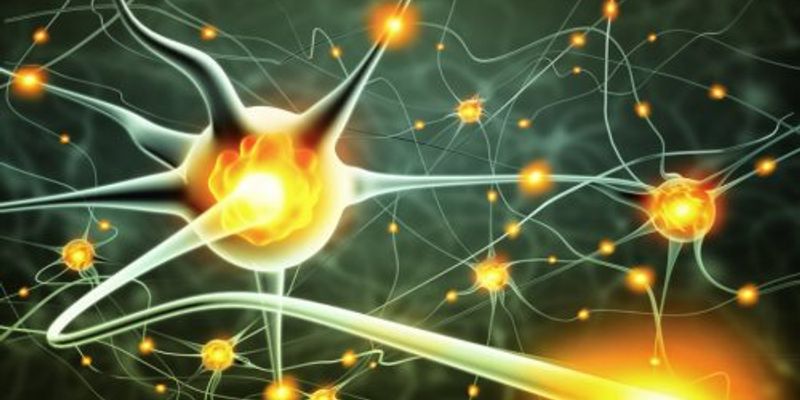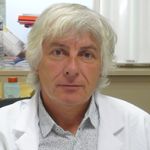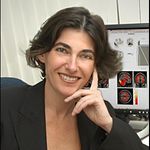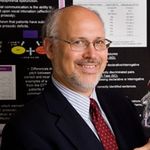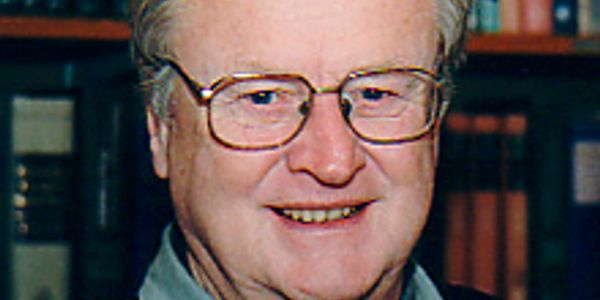Molecular Neuroscience
Molecular Neuroscience: is a division of neuroscience that examines concepts in molecular biology applied to the nervous systems of animals. As with molecular biology, molecular neuroscience is a relatively new field that is considerably dynamic.
-
FEB 08, 2017 | 10:30 AMDATE: February 8, 2017TIME: 10:30am PT, 1:30pm ETThe utility of animal models in drug development is limited, in part, by the measures available to researchers for monitoring animals. I...NOV 17, 2016 | 3:00 PMStem cells play critical roles in the development of organisms, as well as in the maintenance and repair of organs and tissues throughout adulthood. Advancing our understanding of mecha...NOV 09, 2016 | 9:00 AMDATE: November 9th, 2016 TIME: 9:00 AM PT, 12:00 PM ET The screening and functional characterization of novel ligands for G-Protein Coupled Receptors (GPCR) remains a key focus in drug di...NOV 03, 2016 | 12:00 PMBreast cancer is a complex heterogeneous disease, with each subtype characterized by distinct clinical features and molecular alterations. The heterogeneity of breast cancer has presented mas...Speaker: Julie Deschenes, MBA, PhD , Dilhan Weeraratne, PhDNOV 02, 2016 | 10:30 AMAre there DNA targets in your lab that are difficult to genotype using standard PCR or sequencing?Do you ever need to genotype a single sample, and you don’t want to wait to batch sam...Speaker: Brian McNally, PhDAUG 30, 2016 | 8:00 AMPrPC is a conserved lipid-raft associated, GPI-anchored cell membrane glycoprotein. Misfolding of cellular PrPC into the pathogenic PrPSc results in Prion disease, an untreatable and fatal ne...AUG 30, 2016 | 8:00 AMThe isolation of human embryonic stem cells (hESCs) and the discovery of human induced pluripotent stem cell (hiPSC) reprogramming have sparked a renaissance in stem cell biology, in vitro di...AUG 30, 2016 | 8:00 AMHuman induced pluripotent stem cells (iPSCs) are valuable cells for retinal disease modeling, as these cells are of patient origin and can be differentiated into cell types of interest. This ...AUG 30, 2016 | 8:00 AMIn our previous preclinical studies, when neural stem progenitor cells (NS/PCs)-derived from hiPSCs were transplanted into mouse or non-human primate spinal cord injury (SCI) models, long-ter...JUN 28, 2016 | 6:00 AMIn this presentation, we will go over some of the reasons you would want to consider using fluorescence imaging and give a brief introduction to using fluorescent probes for cell structure an...MAY 12, 2016 | 1:30 PMCanon BioMedical was established last year to develop innovative technologies and solutions that empower biomedical research and healthcare communities. Our mission is broad and encompassing,...MAR 17, 2016 | 1:30 PMMaturing neural circuits are dramatically shaped by the environment, but this timing varies across brain regions and plasticity declines with age. Focusing on cellular/molecular mechanisms un...MAR 17, 2016 | 12:00 PMSchizophrenia, depression, bipolar disorder are all uniquely human conditions. Psychiatric conditions include alterations in several different and overlapping domains (NIMH RDoC). Each...MAR 17, 2016 | 10:30 AMGiven the challenges of replicating Parkinson’s disease in animal models, returning to models that are human-based and highly clinically characterized may provide the most successful pa...MAR 17, 2016 | 10:30 AMThe adolescent brain has been forged by evolution to have different features than those of a child or an adult, but it is not broken or defective. Phenomenal ability to adapt to environ...MAR 17, 2016 | 9:00 AMDrug addiction is a chronically relapsing disorder characterized by compulsive drug use despite catastrophic personal consequences (e.g., loss of family, job) and even when the substance is n...MAR 17, 2016 | 9:00 AMA key goal in psychiatry is to build new diagnostic, therapeutic and translational tools and capacity to reduce the impact of emerging mental disorders in young people on survival, distress,...Speaker: Patrick McGorry, MD, PhD, FRCP, FRANZCPPresented at: Neuroscience Virtual Event Series 2016
MAR 17, 2016 | 7:30 AMSchizophrenia (Sz) is a major mental disorder that affects ~1% of the population. Although traditional models of Sz focused on dopaminergic dysfunction, newer models increasingly implic...MAR 17, 2016 | 7:30 AMThere is a growing appreciation of the relationship between gut microbiota, and the host in maintaining homeostasis in health and predisposing to disease. Bacterial colonisation of the gut pl...MAR 17, 2016 | 6:00 AMIn this presentation, Arvid Carlsson, who was awarded the Nobel prize in 2000 for his discovery of the transmitter role of dopamine, will be interviewed by Elias Eriksson. The following aspec...MAR 16, 2016 | 1:30 PMImpulse control disorders (ICDs), also known as behavioural addictions, are common in the general population and can have marked consequences. ICDs can also commonly occur with exposure...MAR 16, 2016 | 12:00 PMTraditional models of basal ganglia disorders are grounded in the assumption that network dysfunction is driven by alterations in intrinsic excitability of striatal neurons. Recent work has c...MAR 16, 2016 | 12:00 PMThis talk will provide an overview of Fourier Transform InfraRed (FTIR) chemical imaging as a powerful and versatile method for obtaining information about CNS tissues. By combining imaging a...MAR 16, 2016 | 10:30 AMIn the adult central nervous system (CNS) small populations of neurons are formed in the adult olfactory bulb and dentate gyrus of the hippocampus. In the adult hippocampus, newly born neuron...
FEB 08, 2017 | 10:30 AM
DATE: February 8, 2017TIME: 10:30am PT, 1:30pm ETThe utility of animal models in drug development is limited, in part, by the measures available to researchers for monitoring animals. I...
NOV 17, 2016 | 3:00 PM
Stem cells play critical roles in the development of organisms, as well as in the maintenance and repair of organs and tissues throughout adulthood. Advancing our understanding of mecha...
NOV 09, 2016 | 9:00 AM
DATE: November 9th, 2016
TIME: 9:00 AM PT, 12:00 PM ET
The screening and functional characterization of novel ligands for G-Protein Coupled Receptors (GPCR) remains a key focus in drug di...
NOV 03, 2016 | 12:00 PM
Breast cancer is a complex heterogeneous disease, with each subtype characterized by distinct clinical features and molecular alterations. The heterogeneity of breast cancer has presented mas...
Speaker:
Julie Deschenes, MBA, PhD
, Dilhan Weeraratne, PhD
NOV 02, 2016 | 10:30 AM
Are there DNA targets in your lab that are difficult to genotype using standard PCR or sequencing?Do you ever need to genotype a single sample, and you don’t want to wait to batch sam...
Speaker:
Brian McNally, PhD
AUG 30, 2016 | 8:00 AM
PrPC is a conserved lipid-raft associated, GPI-anchored cell membrane glycoprotein. Misfolding of cellular PrPC into the pathogenic PrPSc results in Prion disease, an untreatable and fatal ne...
AUG 30, 2016 | 8:00 AM
The isolation of human embryonic stem cells (hESCs) and the discovery of human induced pluripotent stem cell (hiPSC) reprogramming have sparked a renaissance in stem cell biology, in vitro di...
AUG 30, 2016 | 8:00 AM
Human induced pluripotent stem cells (iPSCs) are valuable cells for retinal disease modeling, as these cells are of patient origin and can be differentiated into cell types of interest. This ...
AUG 30, 2016 | 8:00 AM
In our previous preclinical studies, when neural stem progenitor cells (NS/PCs)-derived from hiPSCs were transplanted into mouse or non-human primate spinal cord injury (SCI) models, long-ter...
JUN 28, 2016 | 6:00 AM
In this presentation, we will go over some of the reasons you would want to consider using fluorescence imaging and give a brief introduction to using fluorescent probes for cell structure an...
MAY 12, 2016 | 1:30 PM
Canon BioMedical was established last year to develop innovative technologies and solutions that empower biomedical research and healthcare communities. Our mission is broad and encompassing,...
MAR 17, 2016 | 1:30 PM
Maturing neural circuits are dramatically shaped by the environment, but this timing varies across brain regions and plasticity declines with age. Focusing on cellular/molecular mechanisms un...
MAR 17, 2016 | 12:00 PM
Schizophrenia, depression, bipolar disorder are all uniquely human conditions. Psychiatric conditions include alterations in several different and overlapping domains (NIMH RDoC). Each...
MAR 17, 2016 | 10:30 AM
Given the challenges of replicating Parkinson’s disease in animal models, returning to models that are human-based and highly clinically characterized may provide the most successful pa...
MAR 17, 2016 | 10:30 AM
The adolescent brain has been forged by evolution to have different features than those of a child or an adult, but it is not broken or defective. Phenomenal ability to adapt to environ...
MAR 17, 2016 | 9:00 AM
Drug addiction is a chronically relapsing disorder characterized by compulsive drug use despite catastrophic personal consequences (e.g., loss of family, job) and even when the substance is n...
MAR 17, 2016 | 9:00 AM
A key goal in psychiatry is to build new diagnostic, therapeutic and translational tools and capacity to reduce the impact of emerging mental disorders in young people on survival, distress,...
Speaker:
Patrick McGorry, MD, PhD, FRCP, FRANZCP
Presented at: Neuroscience Virtual Event Series 2016
MAR 17, 2016 | 7:30 AM
Schizophrenia (Sz) is a major mental disorder that affects ~1% of the population. Although traditional models of Sz focused on dopaminergic dysfunction, newer models increasingly implic...
MAR 17, 2016 | 7:30 AM
There is a growing appreciation of the relationship between gut microbiota, and the host in maintaining homeostasis in health and predisposing to disease. Bacterial colonisation of the gut pl...
MAR 17, 2016 | 6:00 AM
In this presentation, Arvid Carlsson, who was awarded the Nobel prize in 2000 for his discovery of the transmitter role of dopamine, will be interviewed by Elias Eriksson. The following aspec...
MAR 16, 2016 | 1:30 PM
Impulse control disorders (ICDs), also known as behavioural addictions, are common in the general population and can have marked consequences. ICDs can also commonly occur with exposure...
MAR 16, 2016 | 12:00 PM
Traditional models of basal ganglia disorders are grounded in the assumption that network dysfunction is driven by alterations in intrinsic excitability of striatal neurons. Recent work has c...
MAR 16, 2016 | 12:00 PM
This talk will provide an overview of Fourier Transform InfraRed (FTIR) chemical imaging as a powerful and versatile method for obtaining information about CNS tissues. By combining imaging a...
MAR 16, 2016 | 10:30 AM
In the adult central nervous system (CNS) small populations of neurons are formed in the adult olfactory bulb and dentate gyrus of the hippocampus. In the adult hippocampus, newly born neuron...
